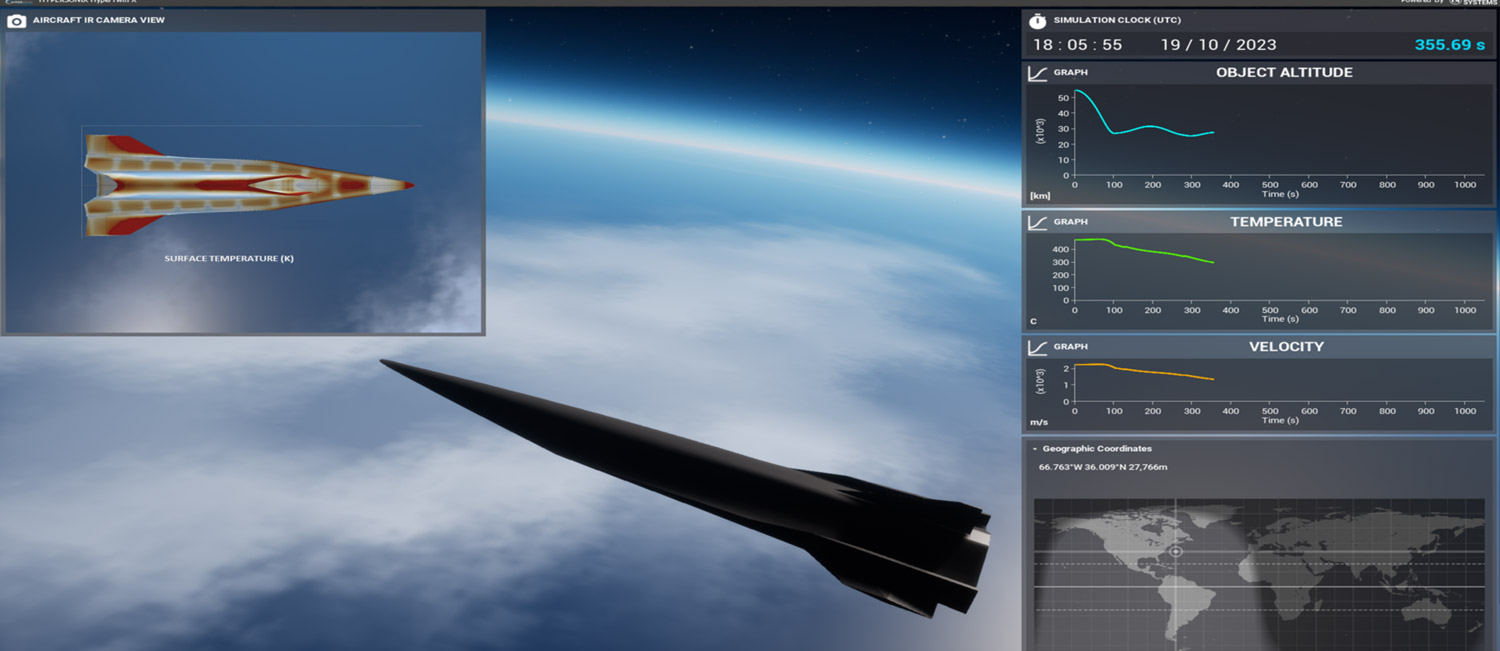
Resources
With a vision to create the world’s leading hypersonic technology, Hypersonix is soaring into the global aerospace and satellite launch markets.

Hypersonix signs MoU with Nominal systems for Digital Twin prototype
Hypersonix and Nominal Systems partner to create Hyper Twin X™, a digital twin demonstrator for the hypersonic DART, marking a leap in aerospace technology development.

A new era for ceramic matrix composites
Insight into Hypersonix's development of high-temperature materials for hypersonic vehicles, improving the sustainability and efficiency of space and defence technology.

Driving reform for Hypersonic drone regulation: Hypersonix leading the way
Hypersonix Launch Systems advocates for global regulatory reform to fully harness hypersonic drone technology, addressing challenges in cargo, emergency response, and space access.
Frequently asked questions
Explore our FAQ section for quick answers to common inquiries, and reach out if you need further assistance.
What is a scramjet?
Scramjet is short form for supersonic combustion ramjet. It is a type of jet engine capable of higher speeds. The scramjet needs constant supersonic airflow to operate effectively; this is achieved by boosting the engine to its operating speed, forcing the air through the engine using specific geometry, unlike conventional jet engines where a compressor is used. Scramjets carry fuel (in our case hydrogen) and mix it with the air flowing at supersonic speeds to create combustion. As it uses the oxygen from the atmosphere, the engine is referred to as “air-breathing”.
The technology has been around for a while, but up to now its application has been limited by the materials available for construction.
When Hypersonix’s DART vehicle gets boosted to Mach 5 velocity, the Hypersonix SPARTAN scramjet engine will kick in and accelerate the vehicle to around Mach 7. For our other vehicles fabricated out of High Temperature Composites such as VISR or Delta Velos, SPARTAN can achieve speeds of up to Mach 12. We've solved the issues of extreme heat associated with high speeds and the stresses of re-entry, using cutting-edge materials. Or in the case of DART, high temperature alloys and limiting the speed to Mach 7 for now.
What is DART?
DART is a disruptive demonstration of Australia’s sovereign hypersonic capability. DART is powered by Hypersonix’s fifth generation reusable fixed geometry SPARTAN scramjet engine. The DART flyer is an autonomous, single use, high-temperature alloy, hydrogen fuelled, manoeuvrable scramjet technology demonstrator specially engineered to work with SPARTAN.
What are possible applications for DART?
DART was originally designed as a technology demonstrator. However, it can be perfectly used as a hypersonic testing platform to collect data at hypersonics speeds of faster than Mach 5 and/or test various systems that never were exposed to these speeds before.
What is HyCAT?
HyCAT is the acronym for the DIU Hypersonic and High-Cadence Airborne Testing Capabilities initiative. DIU is seeking commercial partners, particularly non-traditional defence suppliers, to demonstrate within 24 months a test aircraft prototype that can fly and manoeuvre at greater than Mach 5, can carry two experimental payloads, undertake “long-endurance” flights, and capture in-flight performance data. Hypersonix was awarded together with Rocket Lab and Fenix Space in March 2023.
https://www.diu.mil/latest/diu-awards-first-contracts-for-prototyping-low-cost-high-cadence-long
Where will DART be made?
Hypersonix uses the most advanced additive manufacturing techniques from leading manufacturers to produce DART, and this will continue. Our expert engineering workforce draws on talent from the entire western world of US allies. We will find the best teams and provide them with the tools required to get a good quality job done for our customers.
What fuel does the DART flyer use?
The SPARTAN scramjet engine powering DART runs on Hydrogen fuel onboard and oxygen from the atmosphere. Hydrogen has a much higher energy density than other conventional rocket fuels and produces only energy and water vapour, thus making the SPARTAN scramjet the most sustainable scramjet engine in the world. Hypersonix is also working with green-hydrogen manufacturers to produce hydrogen from renewable energy sources making a fully zero emission fuel source.
When will DART fly?
The team is working towards a first launch in 2024. A total of 3-4 launches are planned for DART initially.
Who is doing all of this?
Hypersonix co-founder Michael Smart is one of the leading experts on scramjets and our team of talented engineers possesses a mixture of cutting-edge expertise and rare experience of flying scramjets in previous experimental programs. The team is growing as we progress on our ambitious path to change the way we fly forever.
How will Hypersonix vehicles reach their ignition speed of Mach 5?
Hypersonix is plug’n’play which means we can launch with any launch provider. Hypersonix is in discussions with several launch providers globally.
What is additive manufacturing?
As we enter the era of Industry 4.0, there is no doubt that the manufacturing industry is undergoing a transformational shift. Additive manufacturing, also known as 3D printing, has been at the forefront of this change, offering a range of benefits that were previously unimaginable.
One of the most significant advantages of additive manufacturing is that it has levelled up the playing field for small business owners. With this technology, they can now compete with giant corporations and produce high-quality products at a fraction of the cost.
Hypersonix has already 3D printed the world’s first fixed-geometry scramjet engine in 2021. With DART AE, Hypersonix will 3D print an entire hypersonic vehicle capable of flying at speeds of Mach 7.
Which materials are used for the high temperature alloys 3D printing of DART AE?
Inconel 718, a nickel-based alloy which is corrosive resistant & has strength & high-class when it comes to resisting high temperatures. We are now also planning to work with other alloys capable of sustaining even higher temperatures.
Is Hypersonix a Defence company?
Hypersonix is a deep tech manufacturer and operator of Unmanned Aerial Vehicles, but our technology can be put to many uses. Applications for our technology exist now for use in Defence. Hypersonix’s long term ambitions go far beyond Defence and extend to fast transport and travel and delivery of satellites to Low Earth Orbit as part of a three-stage launcher. We are already planning new vehicles to service emerging customer needs. You can see them on our website under the “Flight Systems” tab.
What's next for Hypersonix?
We will be present wherever our scramjet can deliver the performance our customers need. We have already developed with a leading manufacturing European partner the techniques required to build our engine in High Temperature composites. We are building a re-usable version of DART from composites. We will announce soon cooperation to extend our reach even further. And as an operator of vehicles in conditions where few have flown before, we will collect, mine and use our flight and simulation data to create digital twins and knowledge products. We are moving fast and will fly faster.
Where can I get more information?
Follow Hypersonix on LinkedIn or check out our website.
Resource hub
Want to learn more about New Space, hydrogen technology, scramjet technology and other industry terms?
Get in touch with us
To discuss our scramjet engines, flight systems or launch systems with a Hypersonix representative, please complete the contact form.
Contact us